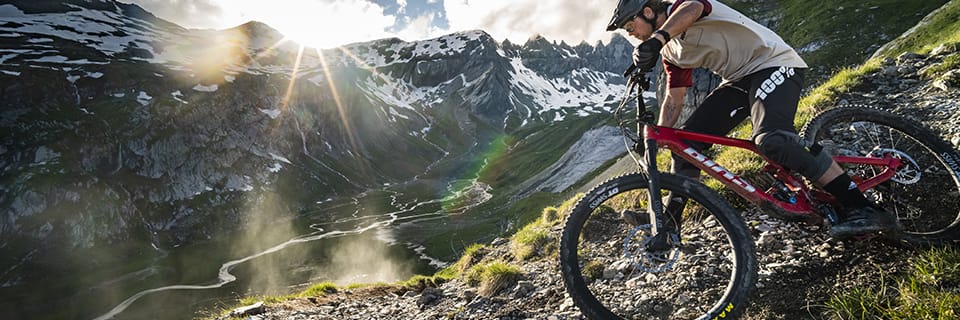When it comes to the handling and comfort of your bike, the choice of frame is crucial. mountain bike frame frame requires a number of considerations. Here are the keys to making the right choice.
Standards
Before choosing your frame, be sure to identify its various features, so you don't have to worry about compatibility with other components:
- Wheel size
- Headset type
- Bottom bracket type
- Wheel axle type
- Front derailleur type
- ISCG type for chain guide assembly
Materials
-
Steel
A steel frame offers great flexibility and incomparable strength, at an affordable price. Its greater elasticity than other metallic materials makes it physically accessible to all cyclists. Competitors will criticize it for its excessive weight and lack of rigidity, although it is now possible to find top-of-the-range steel frames that are almost as stiff and light as aluminum frames.
-
Aluminum frames
Like steel, aluminum frames have evolved considerably. Once reputed to be very stiff but not very comfortable, frames made from this alloy have made great strides thanks to reduced tube thicknesses, offering weight savings too.
Two types of aluminum are mainly used: 6061 and 7005, the former reputed to be lighter while the latter more resistant. Some manufacturers also offer scandium frames. Combined with aluminum, it offers weight savings of 10-15%.
-
Carbon
Present on high-end frames due to its cost, carbon is the material of choice in today's cycling. Because it can be combined ad infinitum with other fibers, carbon makes it possible to create frames that are light and rigid, but physically and technically demanding. Carbon is therefore intended above all for racers.
-
Titanium
Last but not least, a handful of frames are made of titanium. An absolute benchmark in terms of lightness/comfort/performance ratio, and therefore ideal for cross-country use, titanium nevertheless remains very expensive.
Which frame is right for me?
Manufacturers carefully select each material to offer the best balance between performance, weight, strength and price for each riding style.
-
Hiking
For a Rando style of riding, the ideal frame is a comfortable and reliable one, as found on our leisure mountain bikes. We recommend a semi-rigid steel or aluminum frame for maximum performance. Some prefer a full-suspension mountain bike for greater comfort, with a 27.5" or 29" frame and a fork with between 100 and 130 mm of travel for greater versatility.
-
Cross-Country
For Cross-Country outings, a semi-rigid aluminum or even more exclusive carbon frame for maximum responsiveness. Preferably 29" wheels and a fork with between 80 and 120 mm of travel for maximum speed on rolling sections, as well as on rougher terrain.
-
All-Mountain
For all-mountain riding, we recommend a mountain bike capable of both climbing and descending with ease, even in the most demanding conditions. So look for an all-mountain bike with 130 to 150 mm of travel. The amateur will opt for an aluminum frame with 27.5" or 29" wheels, while the competitor will be tempted by carbon in 27.5" or 29" depending on his size and whether he prioritizes riding precision and responsiveness or crossing ability.
-
Enduro
As far as Enduro is concerned, the frame doesn't necessarily have to be the most efficient for climbing, but rather for descending. You'll need an all-suspension frame. The amateur will opt for an aluminum frame with 27.5" or 29" wheels, while the competitor will be tempted by carbon in 27.5" or 29", depending on his size and whether he prioritizes riding precision and responsiveness or crossing ability. For travel, the minimum will be 140 mm, with the more daring on the terrain taking up to 180 mm.
-
DH/Freeride
If you're a DH/Freeride rider, you'll need an aluminum all-suspension, even if carbon is becoming increasingly popular in this field too, for those chasing seconds at the finish line. With 200 mm of travel to handle it all, and 27.5" wheels for maximum responsiveness or 29" for maximum riding ease.
Découvrez tous nos conseils & Tutoriels
